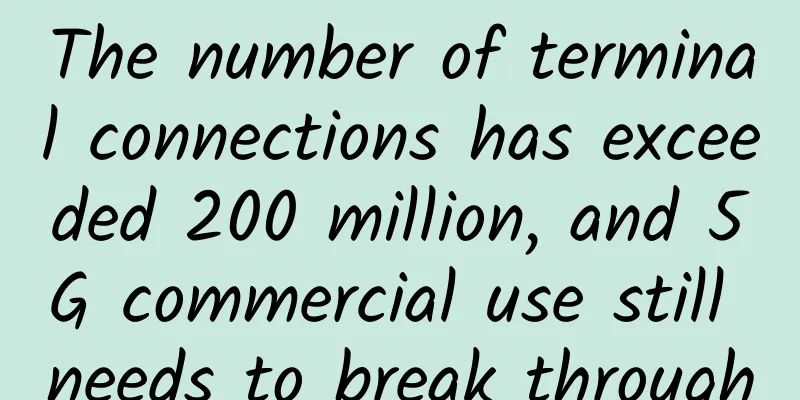4000 words on TCP timeout and retransmission. If you don't learn anything from reading this, I'll lose.

|
The previous article introducing TCP, "TCP three-way handshake, four waves and some details", received good feedback and I am quite happy about it. This time I will continue to talk about the part about timeout and retransmission. We all know that the TCP protocol has a retransmission mechanism, that is, if the sender believes that packet loss has occurred, it will resend the data packets. Obviously, we need a way to "guess" whether packet loss has occurred. The simplest idea is that the receiver returns an ACK to the sender every time it receives a packet, indicating that it has received the data. Conversely, if the sender does not receive an ACK within a period of time, it knows that the data packet is likely lost, and then resends the data packet until it receives an ACK. You may notice that I used the word "guess" because even if it times out, the data packet may not be lost, it just took a long detour and arrived late. After all, the TCP protocol is a transport layer protocol, and it is impossible to know exactly what happened at the data link layer and the physical layer. But this does not hinder our timeout retransmission mechanism, because the receiver will automatically ignore duplicate packets. The concepts of timeout and retransmission are actually so simple, but there are many internal details. The first question that comes to our mind is, how long does it take to be considered a timeout?
1. How is the timeout determined? A one-size-fits-all approach is to set the timeout to a fixed value, such as 200ms, but this is definitely problematic. Our computers interact with many servers, which are located all over the world, both at home and abroad, and the delays vary greatly. For example:
Therefore, setting a fixed value is very unreliable. We need to dynamically adjust the timeout period according to network delay. The greater the delay, the longer the timeout period. Here we introduce two concepts:
A relatively standard RTT definition:
1. Classical method The original specification "RFC0793" uses the following formula to obtain a smoothed RTT estimate (called SRTT):
RTT refers to the latest sample value. This estimation method is called "exponentially weighted moving average". The name sounds high-sounding, but the whole formula is relatively easy to understand. It is to use the existing SRTT value and the latest measured RTT value to take a weighted average. With SRTT, it is time to set the corresponding RTO value. "RFC0793" calculates it like this:
Here, ubound is the upper bound of RTO, lbound is the lower bound of RTO, and β is called the delay dispersion factor, with a recommended value of 1.3 to 2.0. This calculation formula uses the value of (SRTT)·β as RTO, but it also limits the upper and lower limits of RTO. This calculation method seems to be fine at first glance (at least that's how I feel), but in actual application, there are two flaws:
This passage is taken from "RFC1122", let me explain: When packet retransmission occurs, RTT calculation becomes "troublesome". I drew a picture to illustrate these situations: The figure shows two cases. The methods of calculating RTT in these two cases are different (this is the so-called retransmission ambiguity): However, the client does not know which case has occurred. If the client chooses the wrong case, the RTT will be too large or too small, which will affect the calculation of RTO. (The simplest and crudest solution is to ignore the retransmitted data packets and only calculate those that have not been retransmitted, but this will cause other problems. For details, see Karn's algorithm)
Another problem is that this algorithm assumes that RTT fluctuations are relatively small, because this weighted average algorithm is also called a low-pass filter, which is not sensitive to sudden network fluctuations. If the network delay suddenly increases and the actual RTT value is much larger than the estimated value, it will cause unnecessary retransmissions and increase the network burden. (The increase in RTT already indicates that the network is overloaded, and these unnecessary retransmissions will further increase the network burden). 2. Standard Methods To be honest, this standard method is quite... cumbersome, so I will just post the formula:
The overall idea of this algorithm is to combine the average value (which is the basic method) and the average deviation to make an estimate, and a wave of metaphysical parameter adjustment can achieve good results. If you want to learn more about this algorithm, refer to "RFC6298". 2. Retransmission - Important Events of TCP 1. Timer-based retransmission Under this mechanism, each data packet has a corresponding timer. Once the RTO is exceeded and no ACK is received, the data packet is resent. Data packets that have not received ACK will be stored in the retransmission buffer and deleted from the buffer after the ACK is received. First of all, it should be made clear that for TCP, timeout retransmission is a very important event (RTO is often greater than twice RTT, and timeout often means congestion). Once this happens, TCP will not only retransmit the corresponding data segment, but also reduce the current data sending rate because TCP will believe that the current network is congested. A simple timeout retransmission mechanism is often inefficient, as in the following situation: Assume that data packet 5 is lost, and data packets 6, 7, 8, and 9 have already reached the receiver. At this time, the client can only wait for the server to send an ACK. Note that the server cannot send an ACK for packets 6, 7, 8, and 9. This is determined by the sliding window mechanism. Therefore, the client has no idea how many packets are lost, and may pessimistically believe that the data packets after 5 are also lost, and retransmit these 5 packets, which is a waste. 2. Fast retransmit The fast retransmission mechanism "RFC5681" triggers retransmission based on feedback from the receiving end rather than retransmission timer expiration. As mentioned earlier, timer-based retransmissions often require a long wait, and fast retransmission uses a very clever method to solve this problem: if the server receives out-of-order packets, it will also reply to the client with an ACK, but it will be a repeated ACK. Take the example just now, when receiving out-of-order packets 6, 7, 8, and 9, the server will send ACK = 5 for all of them. In this way, the client knows that there is a vacancy in 5. Generally speaking, if the client receives repeated ACKs three times in a row, it will retransmit the corresponding packet without waiting for the timer to time out. But fast retransmit still does not solve the second problem: how many packets should be retransmitted? 3. Retransmission with Selective Acknowledgement The improved method is SACK (Selective Acknowledgment). Simply put, it returns the sequence number range of the most recently received segments based on fast retransmission, so that the client knows which data packets have arrived at the server. Here are a few simple examples: Case 1: The first packet is lost and the remaining 7 packets are received. When receiving any of the 7 packets, the receiver will return an ACK with the SACK option to inform the sender which out-of-order packets it has received. Note: Left Edge and Right Edge are the left and right boundaries of these out-of-order packets.
Case 2: The 2nd, 4th, 6th, and 8th packets are lost.
Because there are many fragment segments in this case, the corresponding Block segment also has many groups. Of course, due to the size limit of the option field, Block also has an upper limit.
However, the SACK specification "RFC2018" is a bit tricky. The receiver may provide a SACK to tell the sender this information, and then "go back on its word", that is, the receiver may delete these (out-of-order) data packets and then notify the sender. The following is excerpted from "RFC2018":
The last sentence means that this measure can be taken when the receiver's buffer is almost exhausted, but this behavior is certainly not recommended. . . Due to this operation, the sender cannot directly clear the data in the retransmission buffer after receiving SACK. It can only be cleared when the receiver sends a normal ACK number greater than the value of its maximum sequence number. In addition, the retransmission timer is also affected. The retransmission timer should ignore the impact of SACK. After all, the receiver deleting the data is no different from losing the packet. 4. DSACK extension DSACK, or repeated SACK, is a mechanism that carries additional information on the basis of SACK to inform the sender which packets it has received repeatedly. The purpose of DSACK is to help the sender determine whether there is packet disorder, ACK loss, packet duplication or false retransmission. This allows TCP to better perform network flow control. Regarding DSACK, "RFC2883" gives many examples. Interested readers can read it. I will not go into details here. |
<<: Image Gallery: TCP/IP Protocol Suite and Security
>>: 6 SD-WAN trends to watch in 2020
Recommend
iWebFusion: 1Gbps server starts at $49/month, 10Gbps server starts at $149/month
iWebFusion (or iWFHosting) is a foreign hosting c...
China's optical network system spending slowed down in Q3
[[181721]] Heidi Adams, senior research director ...
Don’t let “soft power” hinder development in the 5G era
The arrival of 5G not only makes the Internet of ...
Policies continue to increase, an overview of my country's 5G policies in the first half of 2021
Entering 2021, with the continuous acceleration o...
Won the award again! Ruijie Networks won the title of "2021 ICT Industry Influential Enterprise"
On January 6, the "2022 ICT Industry Trends ...
Farewell to the NYSE! The NYSE maintains the delisting decision of the three major operators
[[398109]] On May 7, the three major operators is...
Nine tips you must know about integrated wiring
In fact, integrated wiring is not difficult to un...
China Academy of Information and Communications Technology: Cumulative domestic shipments of 5G mobile phones reached 163 million units from January to December
Today, the China Academy of Information and Commu...
From intelligent operation and maintenance to smart operation, Qingchuang Technology gives enterprises the ability to detective Sherlock
[51CTO.com original article] Operation and mainte...
Damn it, Xiaolin is playing tricks on me again!
Hello everyone, I am Xiaolin. A few days ago, a r...
Understand enterprise AAA authentication, authorization, billing services and configuration in one article
Hello everyone, I am Bernie, an IT pre-sales engi...
A big comparison of 5G packages among the three major operators: China Telecom is the most cost-effective, but I still don’t recommend it
5G has been commercialized for a long time, and m...
What is Power over Ethernet (PoE)?
Power over Ethernet (PoE) is a secure and conveni...
Making campus networks smarter! Huawei AirEngine delivers three new intelligent upgrades
[51CTO.com original article] During HUAWEI CONNEC...
A great tool for front-end engineers - Puppeteer
[[423414]] This article mainly talks about puppet...









